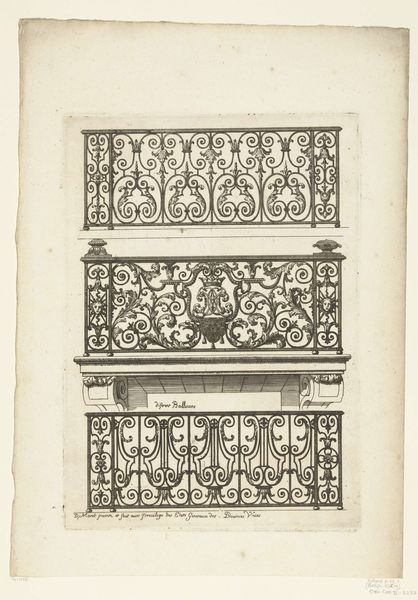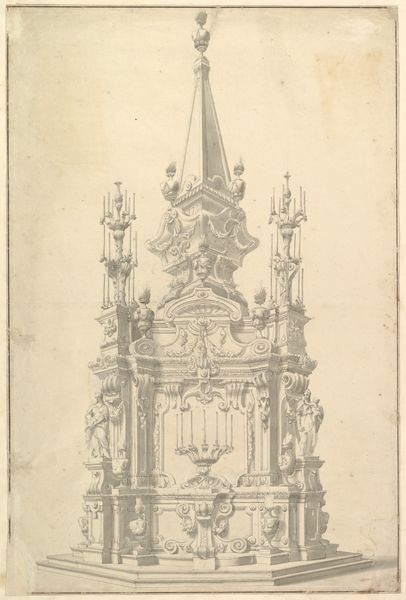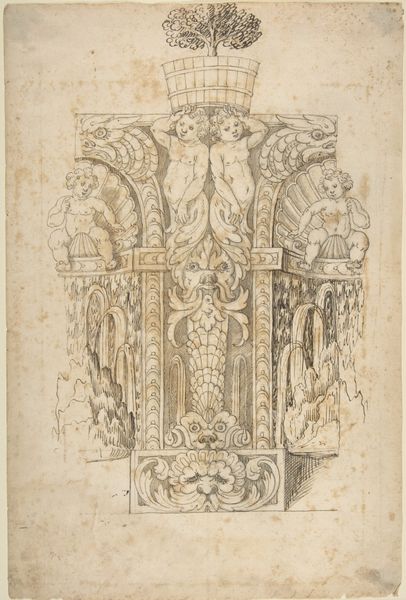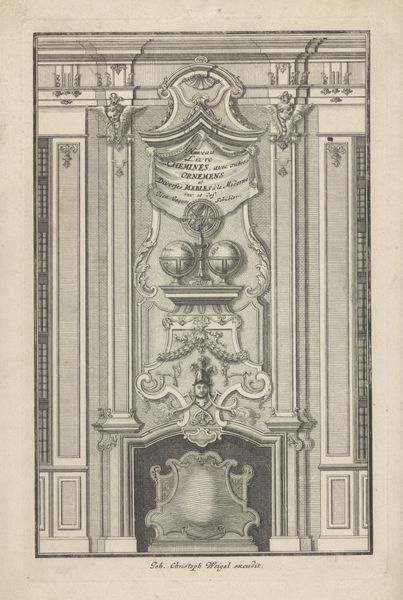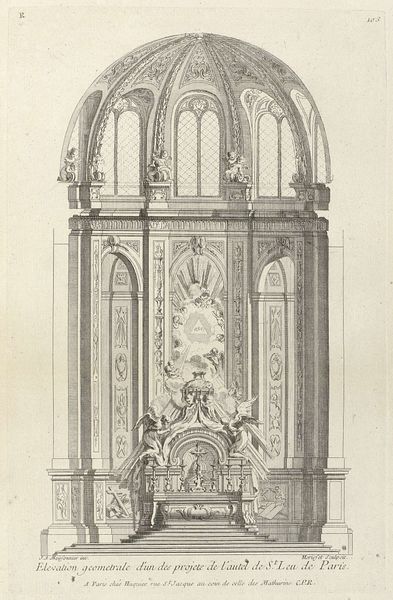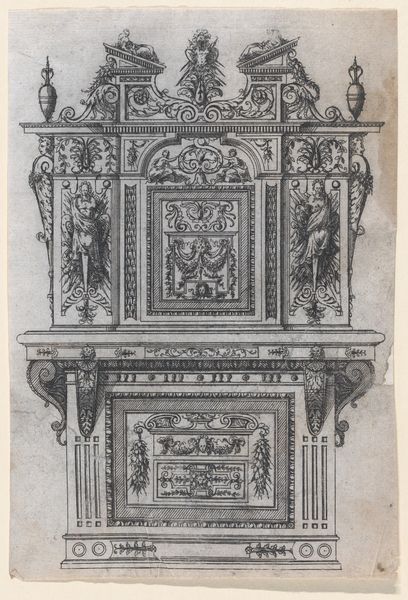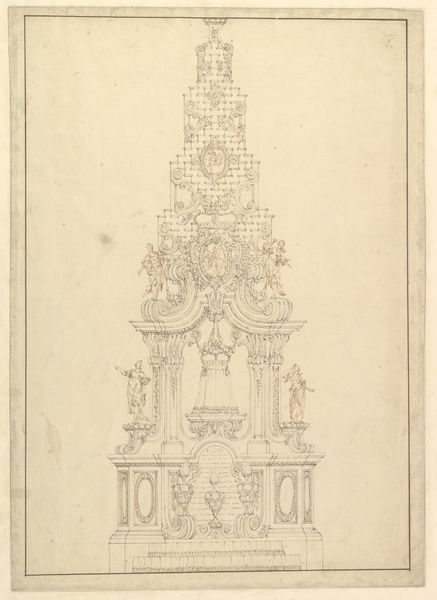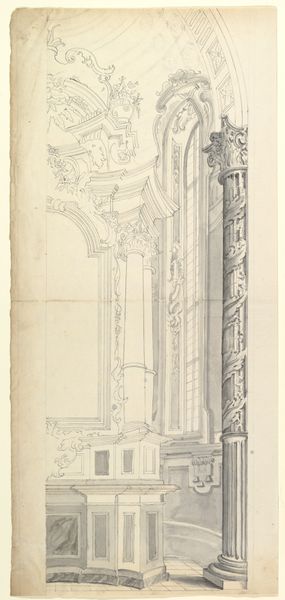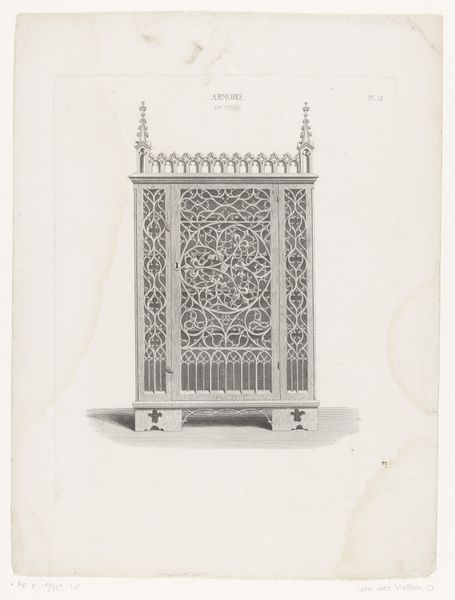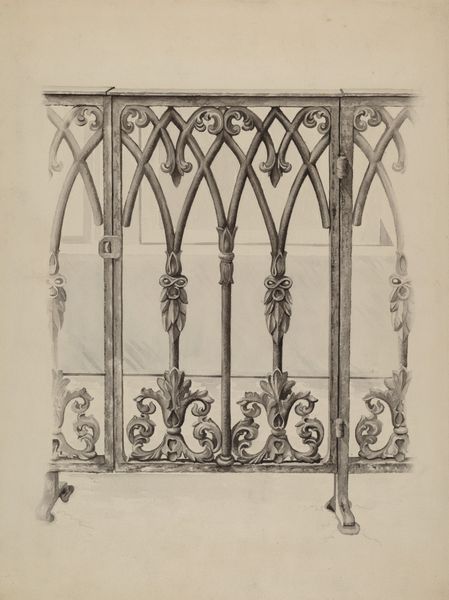
print, woodcut
#
medieval
# print
#
geometric
#
woodcut
#
line
#
decorative-art
Dimensions: 380 mm (height) x 240 mm (width) (bladmaal)
Curator: "Triumfsøljer," or "Triumphal Columns," an 18th-century woodcut, welcomes us with its stark yet ornate presence. It currently resides at the SMK, the National Gallery of Denmark. Editor: Immediately, it strikes me as intensely symbolic, but also a little unsettling. It’s the regimented repetition that gives me that feeling – those four columns… what are they trying to hold up? Curator: Each column acts as a historical marker, you see. Consider the crowns atop each. They aren't merely decorative; they're emblems representing power and authority from a bygone era. Each design contains clues that are representative of specific noble houses. Editor: So, less about individual strength, and more about dynastic symbolism, eh? It’s funny how such rigid forms can carry so much coded messaging. The letters framed on the base of each column feel almost like personal seals. Curator: Indeed. Monograms historically indicated personal heraldry; and you correctly identify them marking legacy. This speaks of inherited narratives of nobility. But consider the woodcut medium itself. It suggests accessibility—these symbols, typically reserved for the elite, are printed for wider consumption. What message does this tension convey, then? Editor: Maybe that power, while seeming steadfast like a column, can be disseminated, almost diluted? The line work is so defined; almost industrial in its precision. And maybe because I know it’s a print, I perceive this underlying theme of reproducibility… and dare I say, replaceability, baked into the structure of the art. Curator: A potent reading, focusing on the print's implications! Consider this, too. The geometric elements reflect that this era sought order. Think how pervasive structures and lines impacted decorative arts during the 1700s and how the geometric conveys rationalism and stability. Editor: Interesting. I saw control more in the content; but you make me appreciate that maybe control is communicated in the construction, in the method itself. These columns are like… little declarations carved in tree bark? I think I'm being fanciful now. Curator: Not at all, that "tree bark" quality is exactly what links this work to historical folk art. And, by association, connects symbols with identity and legacy. It asks viewers to interpret, connect, and perhaps even challenge notions of established hierarchy. Editor: Hmm. Now when I look, it seems the work is inviting us to dismantle it all, too… one clean line at a time. A rather powerful paradox for something meant to showcase permanence. Curator: Perhaps therein lies its lasting strength—a layered piece, open to persistent reflection.
Comments
No comments
Be the first to comment and join the conversation on the ultimate creative platform.
